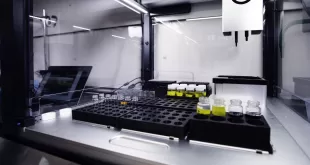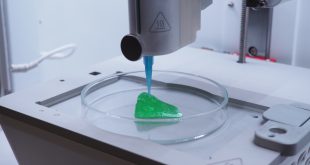By Dan Diehl
Scientific research labs represent a huge portion of the energy demand of a university campus: in many cases, as much as two-thirds of a campus’ energy use can be attributed to research labs. While it may seem clear that labs would be a great place to start when looking to go greener and reduce energy demand, the difficulty of doing so without sacrificing safety can often pose a roadblock. Faced with this challenge, and looking to support their mission to be the world-class leader in research and to attract and retain the best talent, a group of engineers at UC Irvine (UCI) came up with the concept of Smart Labs: a design that can reduce energy consumption by up to 50 per cent in research labs.
Smart Labs is an efficient recipe implemented by UCI to reduce energy use and provide better Indoor Environmental Quality (IEQ) in labs. This recipe can be easily implemented in other universities and research lab settings, and can dramatically reduce energy consumption by up to 50 per cent or more. All the while, intelligent ventilation platforms keep lab personnel safe by ensuring that air quality adheres to strict safety standards.
Smart Labs Basics
Smart Labs was initially implemented by UCI and is an energy conservation and technology-enabled approach, consisting of seven Smart Lab Essentials.
The seven essentials are:
• Lower system pressure drop
• Demand-based ventilation
• Dynamic, digital control systems
• Fumehood airflow optimization
• Exhaust fan discharge velocity optimization
• Continuous commissioning with automatic cross functional platform fault detection
• Demand based, LED lighting with controls
The implementation of these essentials is at the heart of how the Smart Labs approach reduces energy use so drastically while maintaining strict adherence to safety regulations. The Smart Lab approach can be implemented both in new buildings and by retrofitting existing buildings. UCI has applied the design to 13 buildings across campus reducing energy use by an average 61 per cent while providing a better environment for lab occupants.
Intelligent Ventilation Platform at the Heart of it All
Given that six of the seven Smart Lab Essentials pertain to the ventilation system and its controls, it is no surprise that Demand Control Ventilation is at the heart of Smart Labs success. Labs require 100 per cent outside air, with a full changeover of internal air volume required six to 10 times per hour during normal operation. As such, a huge amount of energy is expended by lab buildings’ ventilation systems: heating, cooling, humidifying, dehumidifying, filtering, distributing, supplying, and expelling air.
It can be difficult to determine the proper air exchange rates in labs, especially given the need to balance costly air exchange with the need for a safe working environment for researchers. The reality is that setting a single air change rate to balance safety and energy consumption will not achieve either objective. Instead, ventilation should be matched to current needs through Demand Control Ventilation (DCV).
For this reason, the UCI engineers tasked with designing the Smart Labs approach focused on how to most efficiently and effectively control building ventilation. The resulting design utilizes DCV technology from Aircuity, not just to generate energy savings, but also to supply key safety information about the building in the form of air quality data.
Aircuity’s solution supports the six essential items that deal with ventilation and its control, and contributes over half of the energy savings of smart labs in addition to being “the brain of the system” by delivering intelligent data about the lab operation. Aircuity’s laboratory-focused DCV solution provides continuous monitoring of critical environments and automatically adjusts ventilation rates for safety and energy efficiency.
Continuous monitoring of the lab environment gives safety personnel insight to what is happening on a 24-hour, seven-days-a-week basis. Regardless of when an event occurs, ventilation rates will automatically increase until the air is clean again, and run at higher rates. Additionally, safety personnel may review IEQ data so that incidents can be identified, and persistent issues can be evaluated to improve lab practices.
Smart Labs Beyond UCI’s Campus
UCI went on to win the Department of Energy’s (DOE) Better Building’s Challenge with its Smart Labs project, with experts expecting the school to achieve 40 per cent energy savings on the main campus by 2020 – twice the DOE program’s objective. In September of 2016, the Department of Energy’s Federal Energy Management Program (FEMP) and the Better Buildings Challenge teamed up to launch the Smart Labs Accelerator. Through this program, labs in universities and other research settings across the country can become Smart Labs Accelerator Partners and commit to reducing energy use in labs by at least 20 per cent over the next 10 years. Following UCI’s 7 Smart Lab Essentials recipe is the best way for partners participating in this program to replicate and even exceed this goal.
Daniel E. Diehl, CEO, brings more than 25 years of industry expertise across a wide variety of vertical markets and disciplines in commercial and light industrial building markets. Diehl has been an integral part of the growth and success of Aircuity, leading global sales for his first four years with the company before being appointed CEO. Diehl earned a BS degree in Mechanical Engineering from the University of Maryland, and has an MBA from Villanova University.
 BioLab Business Magazine Together, we reach farther into the Canadian Science community
BioLab Business Magazine Together, we reach farther into the Canadian Science community





